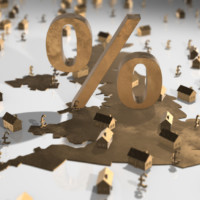
This is the highest rate of offers since the Tracker started at the beginning of 2016, despite an uncertain political and economic backdrop.
First-time buyers were also more successful in Q2; 88% of their applications led to an offer, up from 71% in Q2 2016.
This continued growth in successful applications is a testament to the intermediary channel’s ability to match consumers with products in a complicated and competitive marketplace.
Borrowers’ applications are subject to a number of regulatory hurdles, and while various layers of regulation have built a healthy and sustainable market, it can make obtaining a mortgage more challenging.
Continuing confidence
The tracker also revealed a pervading sense of optimism among brokers themselves.
When asked, 96% said they were optimistic about the mortgage market’s future.
On top of this, 97% of brokers said they were confident in the outlook for the intermediary sector, and a further 97% said they were confident in the outlook for their own firms.
It would therefore appear then that the snap general election, hung parliament and ongoing Brexit-gloom failed to diminish borrowers’ and lenders’ appetites, or dampen brokers’ positivity.
Data from UK Finance confirms that there was solid growth in Q2, with gross lending totalling 6% more than Q2 2016.
Robust foundations and high levels of confidence might serve the market well in coming months; Nationwide’s suggestion that house price growth is tapering and the economy is cooling off indicates that it may not be all plain sailing from here.















